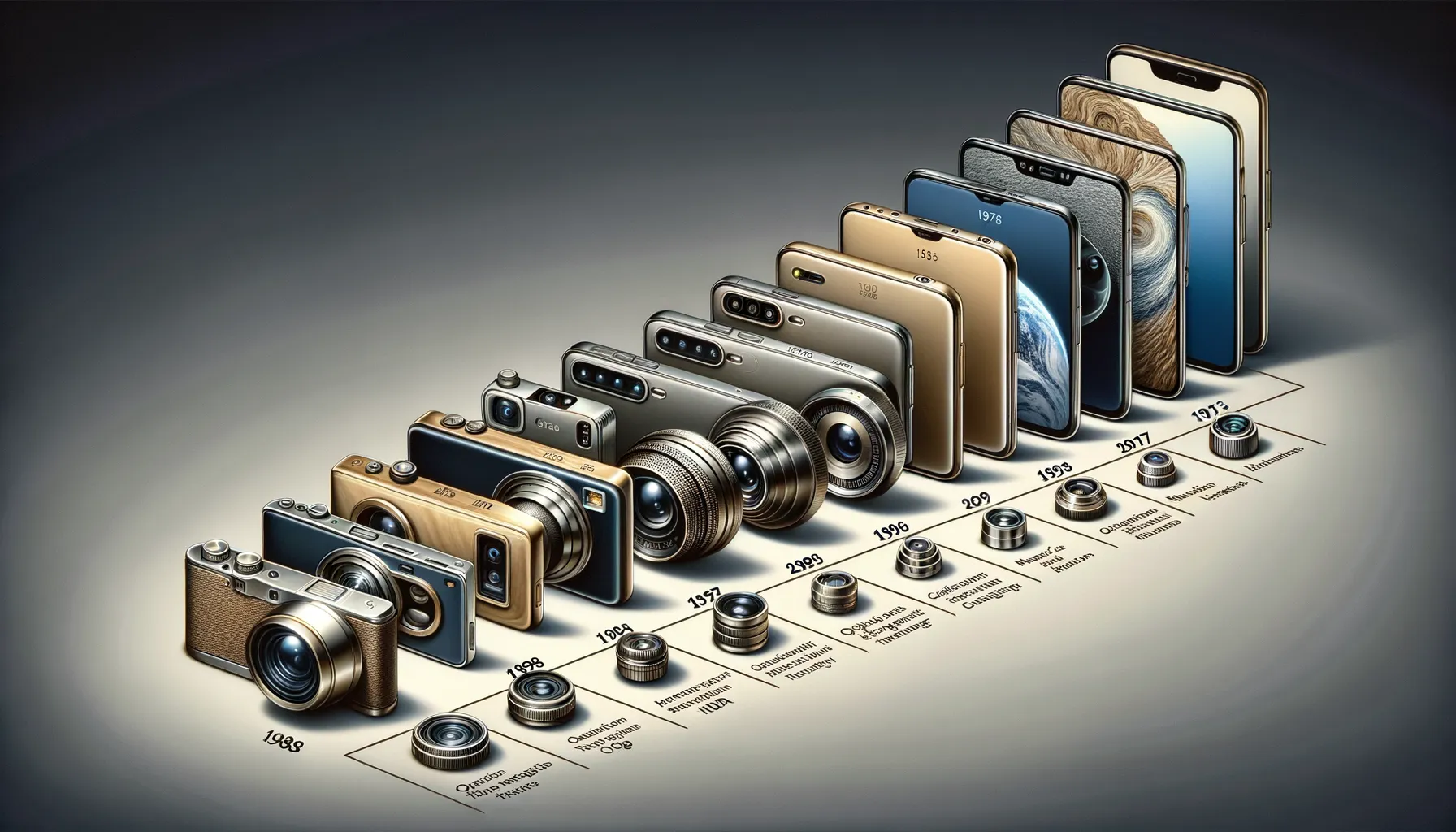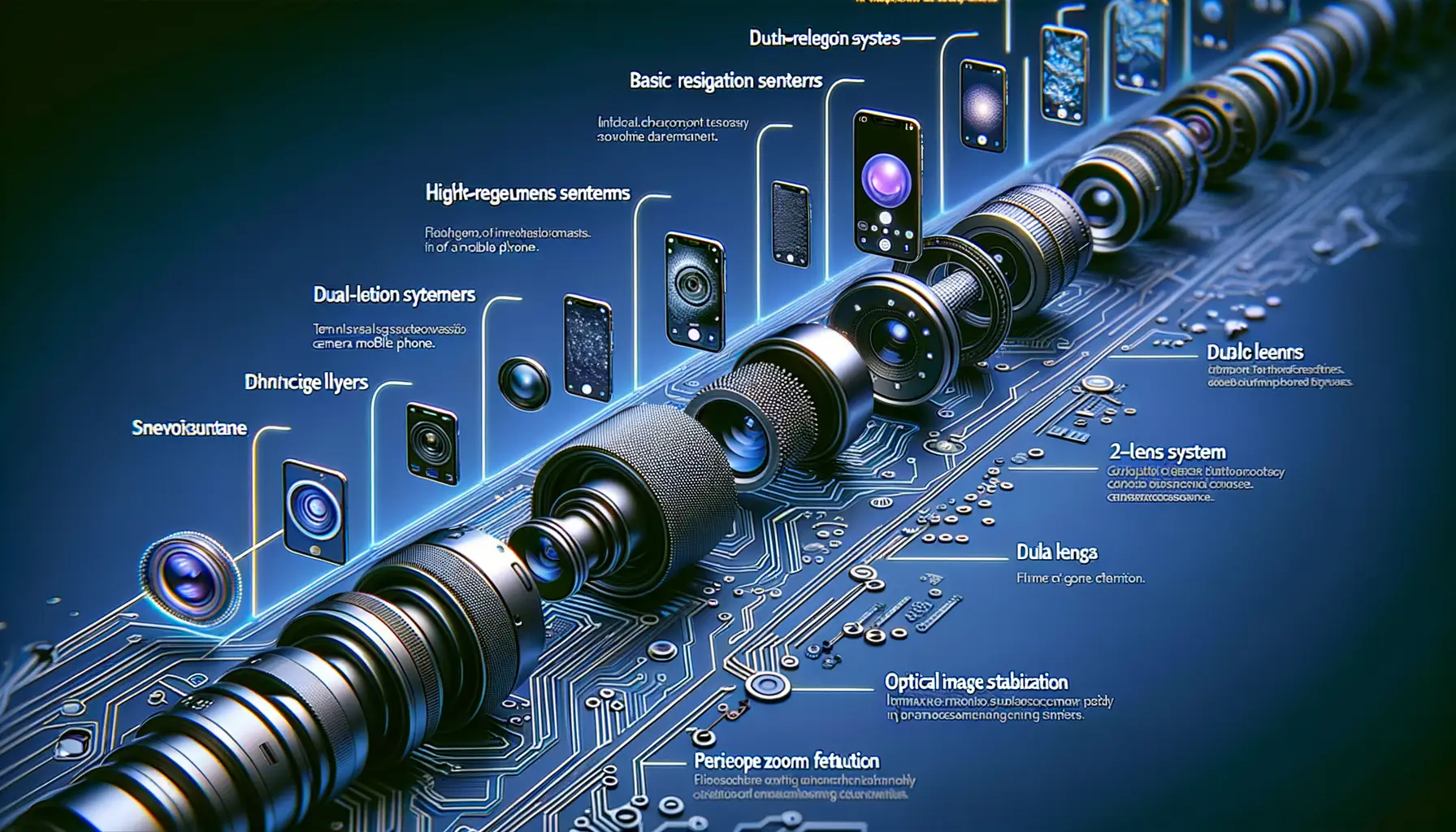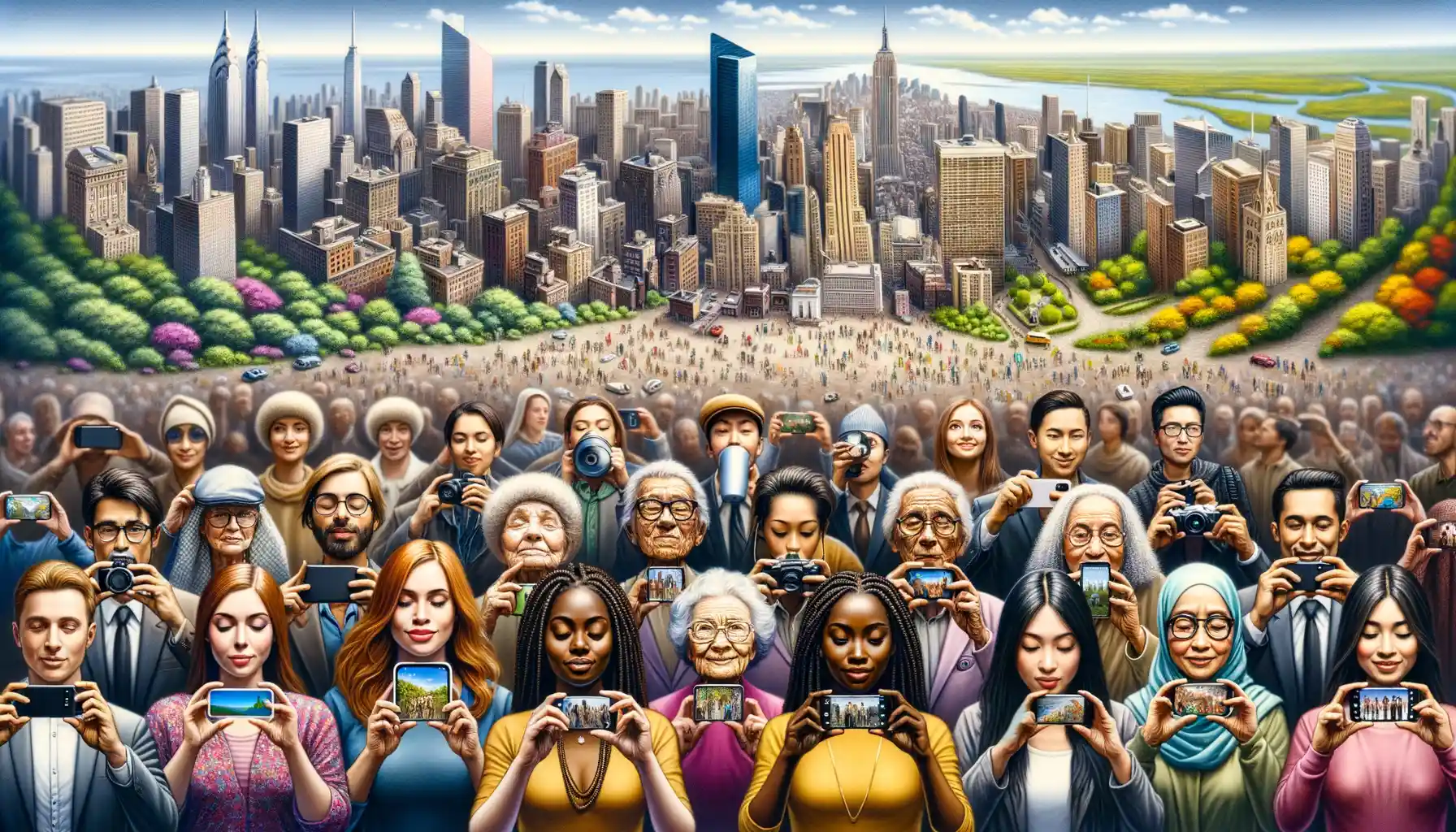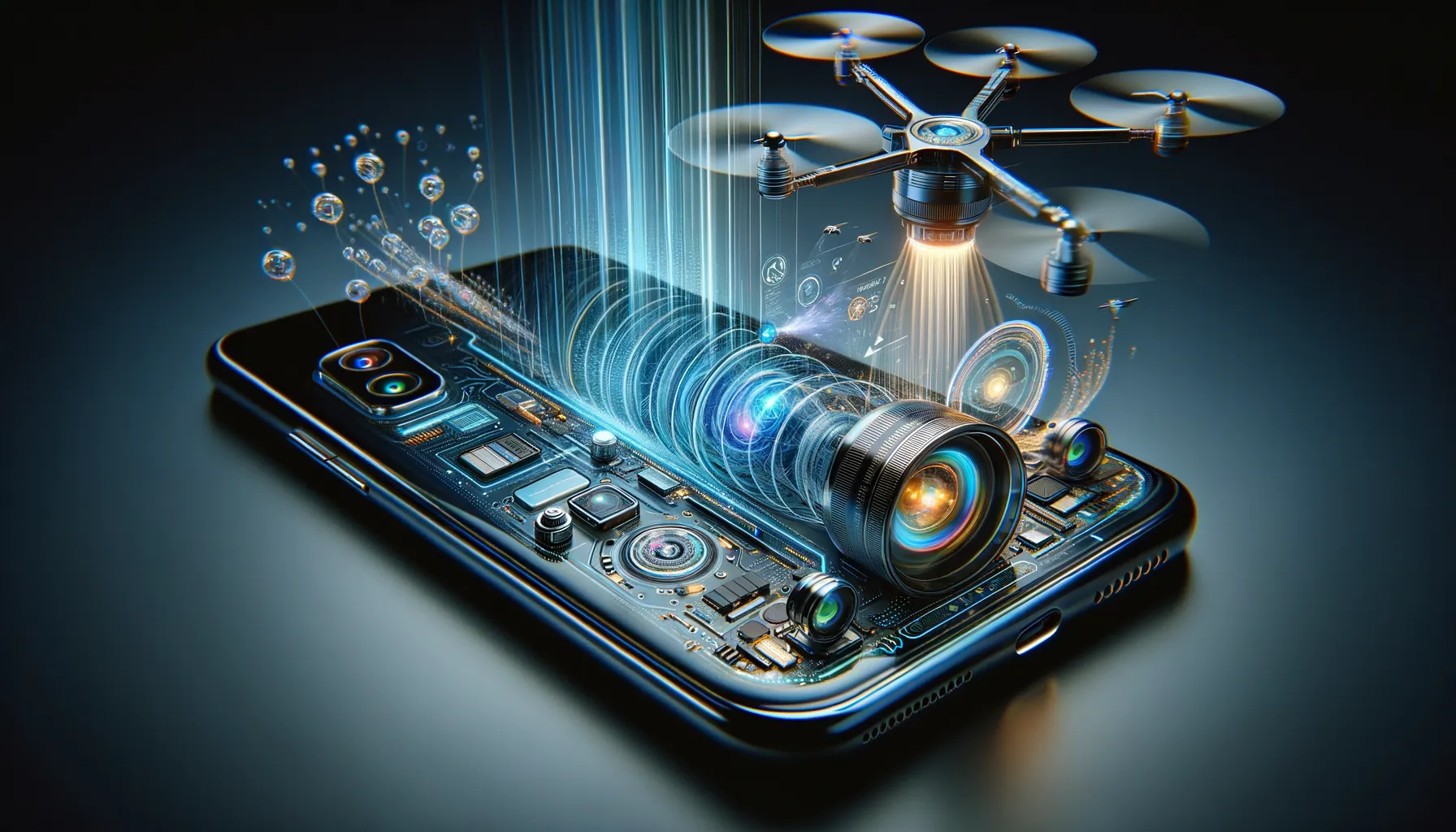The Evolution of Smartphone Cameras Over the Decade
Introduction to the Evolution of Smartphone Cameras
Do you remember those grainy, low-quality photos from early smartphones? The ones where every picture looked like it was taken through a foggy window? It’s hard to believe how far we’ve come in just a decade. Today, smartphone cameras don’t just capture moments—they immortalize them with jaw-dropping clarity and detail. Let’s take a journey through time and uncover how these pocket-sized marvels evolved into the photography powerhouses we can’t live without.
The Humble Beginnings: A Camera in Your Pocket
When the first smartphones with cameras hit the market, they felt revolutionary. A camera… in your phone? It was groundbreaking! But back then, a 1-megapixel image was considered top-of-the-line. Fast forward to today, and we’re carrying devices that rival professional cameras. A decade ago, you might snap a blurry photo of your cat; now, you can shoot a 4K video of your dog chasing its tail and make it look like a scene from a Hollywood flick!
- The early 2000s: Cameras had basic functions—no zoom, no filters, no HDR.
- 2015 onwards: Features like dual-lens systems and portrait modes changed the game entirely.
From Gimmick to Game-Changer
What once started as a curiosity has transformed into an essential tool for creativity, communication, and even survival—yes, survival! Think about it: stranded on a hike? That hi-res shot of your surroundings could guide rescuers to you. Or maybe it’s less about survival and more about Instagram-worthy brunch pics. Either way, the transformation is undeniable.
Smartphone cameras didn’t just evolve; they’ve redefined how we see the world. Today, capturing the perfect sunset or snapping a spontaneous selfie feels effortless. Honestly, who would’ve thought what used to be a clunky feature would become so polished and indispensable?
Key Milestones in Smartphone Camera Development

The Dawn of Megapixel Madness
It feels like yesterday when the idea of a camera in your pocket felt like magic. Remember the 2000s? That’s when it all began. The game-changer? The Sharp J-SH04, 2000’s little marvel from Japan, boasting a tiny 0.11 MP sensor. It wasn’t much by today’s standards, but it made history as the first mobile phone with an integrated camera.
Fast forward to 2007, and along came the iPhone. Suddenly, cameras weren’t just an afterthought—they were essential. Apple embraced the user-friendly, all-in-one vision we’d craved. A year later, Samsung’s Pixon8 upped the ante with an 8 MP sensor, making smartphone cameras competitive with entry-level digital cameras.
Breaking Barriers: From HD to Night Vision
The real fireworks began in the 2010s. Who could forget Nokia’s 808 PureView in 2012, packing an unbelievable 41 MP sensor? Around the same time, we saw the rise of HDR modes, turning tricky lighting into cinematic brilliance.
By the mid-2010s, dual cameras surfaced—thank you, iPhone 7 Plus—ushering in optical zooms and bokeh effects. And let’s not ignore Google Pixel’s AI-powered photography that made night look like day with its jaw-dropping Night Sight.
- 2018: Triple-camera setups (Huawei P20 Pro) unleashed creativity like never before.
- 2019: Smartphones started recording 4K video at 60 fps, rivaling professional gear!
Each milestone whispered one promise: The future is limitless. And oh, have we listened!
Technological Innovations That Shaped Smartphone Cameras

The Magic Behind the Pixels
Think about this: the tiny lens on your smartphone has more power than some of the cameras professional photographers used a decade ago. How did we get here? It’s all thanks to a series of jaw-dropping innovations that transformed phone cameras from grainy blobs into dazzling tools for visual storytelling.
Let’s talk sensors first. Back in the day, smaller meant worse—tiny sensors meant noisy, pixelated images. But then came backside-illuminated (BSI) sensors, a game-changer that flipped traditional designs and captured light more efficiently. Suddenly, low-light photos stopped being a gamble and started becoming works of art.
Then there’s computational photography. It sounds techy, I know, but picture this: your phone’s camera doesn’t just “see,” it thinks. With AI-powered features like Night Mode and real-time HDR, these innovations stitch together multiple shots in milliseconds, turning even the dullest scenes into Instagram gold.
- Optical Image Stabilization (OIS): Goodbye shaky hands, hello steady shots!
- Periscope-style zoom: Bringing faraway subjects closer without sacrificing clarity.
- Multi-camera setups: Ultra-wide, telephoto, macro—your pocket now holds a whole studio.
By blending hardware wizardry with software genius, smartphone cameras have erased the line between pro equipment and everyday gadgets.
Impact of Smartphone Cameras on Society and Photography Trends

How Smartphone Cameras Redefined Everyday Moments
It’s astonishing how a rectangle in our pockets transformed into a window to the world. Smartphone cameras aren’t just tools; they’ve become silent storytellers, shaping how we capture and share life. Remember lugging around bulky DSLRs for a family vacation? Now, a sleek device in your hand does the job—with filters, edits, and instant uploads included.
Smartphone cameras have turned us all into amateur photographers. From the candid chaos of a toddler’s laugh to golden-hour selfies bathed in dreamy light, our phones let us immortalize fleeting moments with a simple tap. Photography isn’t reserved for professionals anymore—it’s democratic, raw, and personal.
- Social media: Platforms like Instagram thrive on smartphone visuals, setting trends and birthing influencers.
- Cultural shifts: The rise of food photography (yes, avocado toast!) or documenting protests has shaped new narratives.
- Accessibility: High-quality photos are no longer a luxury; everyone everywhere can tell their story.
Trends Shaping Modern Photography
Unfiltered shots are making a comeback, a rebellion against overly edited perfection. And let’s not ignore the meteoric rise of AI-powered features, from portrait-enhancing bokeh effects to jaw-dropping astrophotography. Smartphones didn’t just join the photography game—they rewrote the rules.
Future Perspectives and Trends in Smartphone Camera Technology

What’s Next for Smartphone Cameras? A Lens into Tomorrow
The world of smartphone cameras is poised to evolve in ways that feel almost magical. Have you ever imagined taking a photo that looks straight out of an art gallery, without lifting more than a finger? That future isn’t far off. The fusion of hardware and software advancements is setting the stage for experiences we once only dreamed of.
Artificial Intelligence (AI) is already rewriting the rules of photography, and it’s just warming up. Think beyond simple scene detection. AI could soon predict *how* you want your image to feel—crisp like a winter morning or warm like a fading sunset—and adjust everything automatically, from lighting tones to composition tips.
- Multispectral imaging: Cameras may soon capture light invisible to the human eye, offering details like never before.
- Periscope zoom lenses: Imagine zooming into the farthest corner of a mountain range without losing an ounce of sharpness.
Meanwhile, companies are exploring ultra-thin lens technologies, making room for even larger sensors in sleeker designs. It’s not just about higher megapixels anymore; it’s about capturing life as vividly as we see it—or maybe even better.
